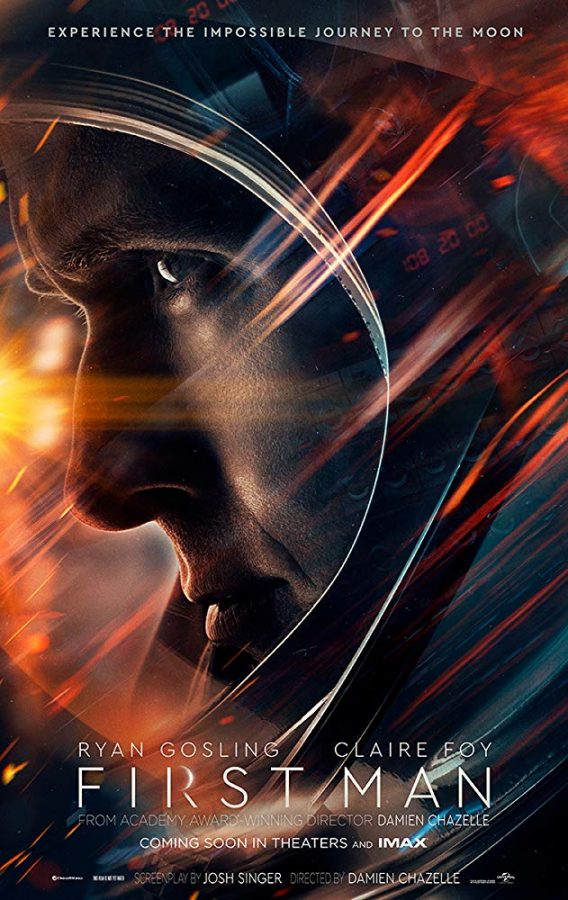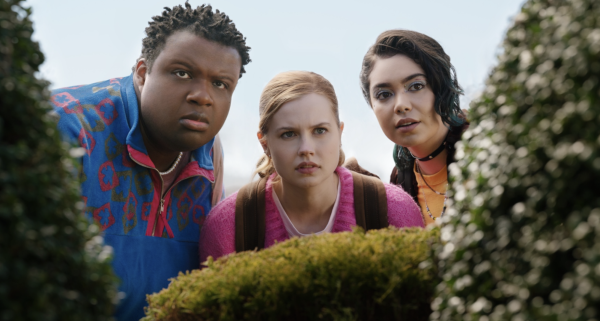‘First Man’ is an engaging slow-burn and an accomplishment in technical filmmaking
For many movies about space, the moon is a triumphant goal. It’s something to be praised and something very pretty for the characters to look at. “First Man” treats the moon as a beast. As if the moon is a terrible beast for our protagonist to conquer, or as if the moon itself is the main antagonist. And it works. With its impressive cinematography, scoring, and strong performance from Ryan Gosling, “First Man” proves to be a gritty, realistic look at the dangers of space travel, that grips you, despite it’s “slow-burn” approach to it’s storytelling.
“First Man” follows famed astronaut Neil Armstrong (Ryan Gosling) over the course of several years, showing his first days at astronaut training, to his important space flights, and finally, to his iconic walk on the moon. We watch as Armstrong struggles to achieve his goals, all the while trying to balance the dangerous nature work with being there for his wife (Claire Foy) and family.
Gosling and Foy are wonderful as Neil Armstrong and his wife Janet Shearon. Claire Foy does a great job giving a dynamic performance as her character tries to manage supporting her husbands goals, despite knowing that at any moment, some technical failure could kill her husband and steal the father of her children. On the other side, Gosling portrays Neil Armstrong as a smart, overachiever who has trouble sharing his emotions with others. Gosling gives just enough to show the audience a range of emotions, despite a lack of many explosive, emotional scenes. His performance contains a beautiful subtlety, while still giving the audience enough to like him.
On the technical side, “First Man” is an incredible accomplishment. The cinematography is some of the best of this year. Director Damien Chazelle switches between 16 millimeter, 35 millimeter and IMAX cameras to present different parts of the film. The 35 millimeter and 16 millimeter are used in more personal moments, and have a slight graininess to them, giving these scenes a vintage and older feel to them.
On the other hand, the scenes shot in space are filmed with an IMAX camera, giving them a beautifully clear image to present, making space and the moon seem timeless and eternally radiant. Space is captured on film perhaps the best it’s ever been captured without actually going into space. Each shot, on earth or in space is done very purposefully and methodically, many of them feeling like individual works of art.
The scoring of this movie is also incredible. Justin Hurwitz presents a beautiful and imposing soundtrack, using music perfect moments, and using silence during moments that are equally as perfect. The soundtrack teeters between subtlety delightful, showing intricate moments of space travel as a complex ballet, while juxtaposing these moments with loud, imposing horns that present the grand adventures into space as behemoths that appear impossible to conquer. The combination of this wonderful scoring and appealing cinematography provide for breathtaking moments of cinema that shall not soon be forgotten by the audience.
In conclusion, “First Man” is a movie worth seeing. Its strong performances, brilliant cinematography, and outstanding soundtrack make a strong film that stands out as a technical marvel. For those who prefer a shorter run time and don’t wish to sit through a very slow story, perhaps skip “First Man.” However, the story is engaging enough to keep you invested and should provide for a satisfying movie-going experience.
Sam Rodd is a senior at Pelham Memorial High School and a lover of theater, music and movies. He spends most of his time rehearsing in musicals and plays....


















